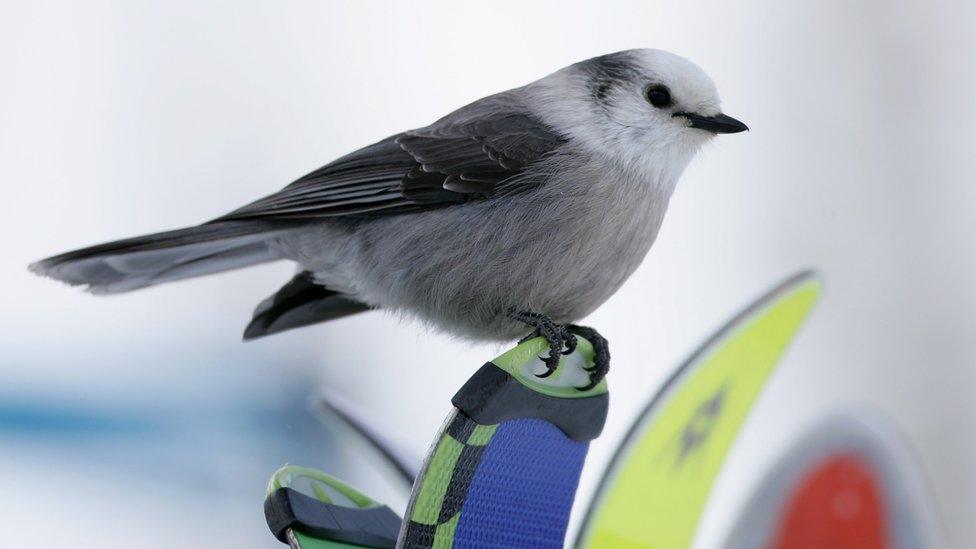Canadian currency: Do you know these women?
- Published

For the first time, a Canadian woman will be on Canada’s currency.
The Bank of Canada is about to put the first woman who's not called Her Royal Majesty on its currency.
You may not have heard of her, but you are about to see her face everywhere.
After whittling 461 eligible nominees down to just five, the Bank of Canada announced its short list for the honour: Viola Desmond, E Pauline Johnson, Elizabeth MacGill, Fanny Rosenfeld and Idola Saint-Jean.
None are household names in Canada, let alone outside of Canada, though all have auspicious biographies.

Which women will be on Canada's currency?
Desmond fought against discrimination when she refused to sit in the "black" section of a movie theatre in 1946.
Johnson, the daughter of a Mohawk chief, became a cultural ambassador for Canada through her poetry tours across the US and England at the turn of the 20th Century.
MacGill was the first woman to receive an electrical engineering degree in 1927 from the University of Toronto and helped build the Hawker Hurricane fighter plane used in WWII.
Saint-Jean helped obtain the right for women to vote in Quebec in 1940.
Rosenfeld was an Olympian who won a silver medal for the 100-metre dash in the 1928 Amsterdam Olympics.
The winner will be revealed during a live ceremony on 8 December, along with the value of the bill she'll inhabit once the currency goes into circulation sometime in 2018.
The move to put a Canadian woman on a banknote was first heralded by Prime Minister Justin Trudeau on Women's Day in March.
Canada had intended to put an image of the five famous suffragettes who fought for women to be allowed to be appointed to the Senate on the back of the $50 bill, but in 2011 the bill instead featured a glacier.
In the US, the $10 will have a picture of famous suffragettes on the back, while the $20 will soon feature Harriet Tubman.
In Britain, Jane Austen will appear on the new £10 note next year.
The women were selected by a panel of nine Canadians from different backgrounds.
Their mandate was to select nominees who had "broken or overcome barriers, made a significant change, left a lasting legacy, and be inspirational", according to the bank's press release.
The women had to be Canadian, not fictional - sorry, Anne of Green Gables - and they had to have been dead for 25 years or longer.
But in a repeat of the national-bird controversy, which saw a committee of "experts" pick the gray jay over the loon, the distinguished panel may have misjudged the will of the people.
The gray jay has been chosen as Canada's national bird
The relative unknowns beat more popular contenders such as Anne of Green Gables author Lucy Maude Montgomery and Nellie McClung, Canada's most famous suffragette and the favourite to win, external.
"McClung was Canada's Eleanor Roosevelt, except she didn't have to start by marrying a rich politician to get there. McClung married some run-of-the-mill druggist known to history as 'Nellie McClung's husband,'" quipped Tristin Hopper in National Post. , external
While both McClung and Montgomery would have been more recognisable choices, Perdita Felicien, one of the members of the advisory council tasked with selecting the finalists, says that's not the point.

A statue of the “famous five” suffragettes includes Nellie McClung, who did not make the shortlist to be on Canada’s currency.
"We really wanted this list not to be a popularity contest," Ms Felicien told the BBC.
Instead, Ms Felicien says the committee spent many hours poring over names trying to find ones who "all Canadians can be proud of".
"There are so many women that have contributed to the fabric of our country that we don't know about, that aren't written about in textbooks," she says.
The Post's Mr Hopper has a rather cynical opinion about why fan-favourite McClung was left off: the paragon of feminism was also a strong supporter of eugenics.
But Ms Felicien would rather not speculate.
"I'm focusing on the women did make the list," she says.
- Published17 November 2016

- Published17 March 2016
